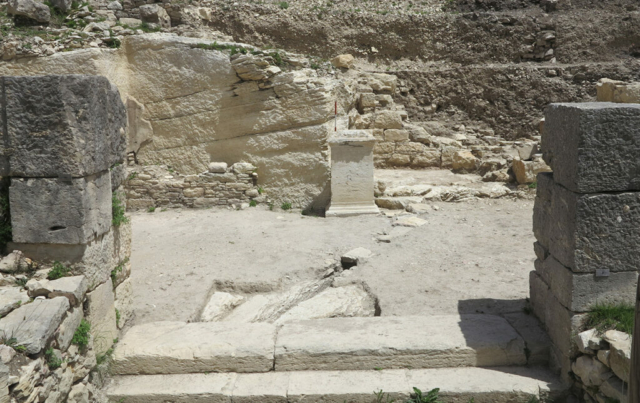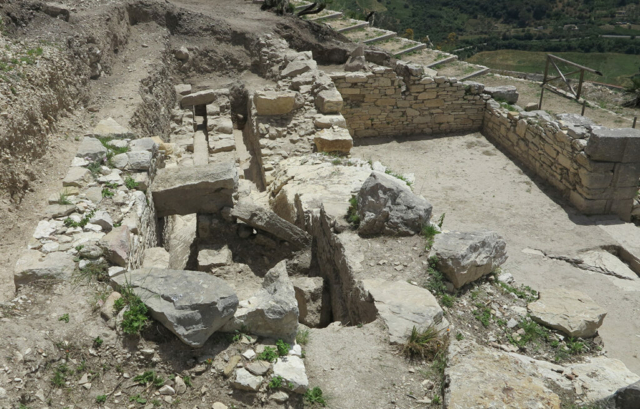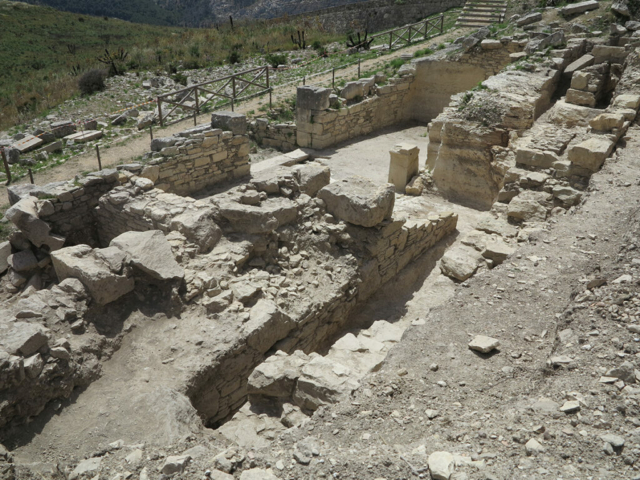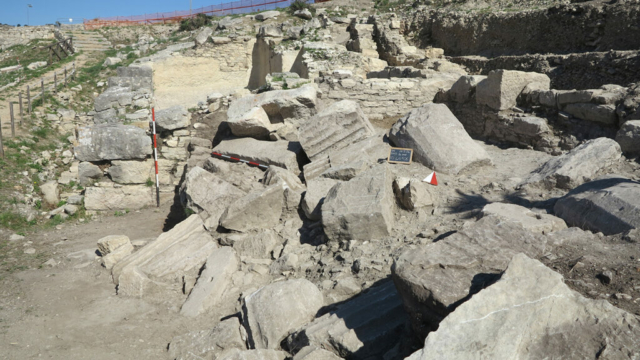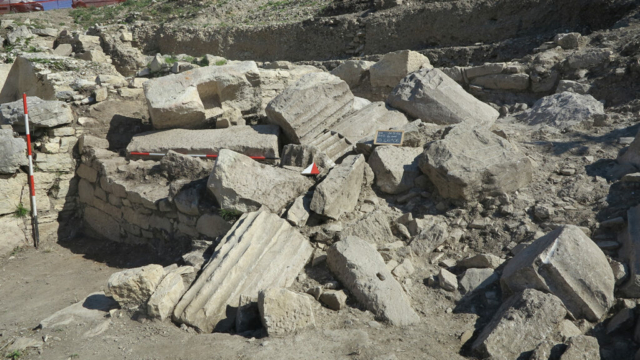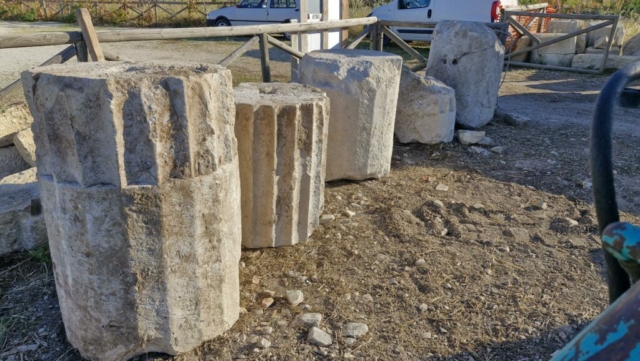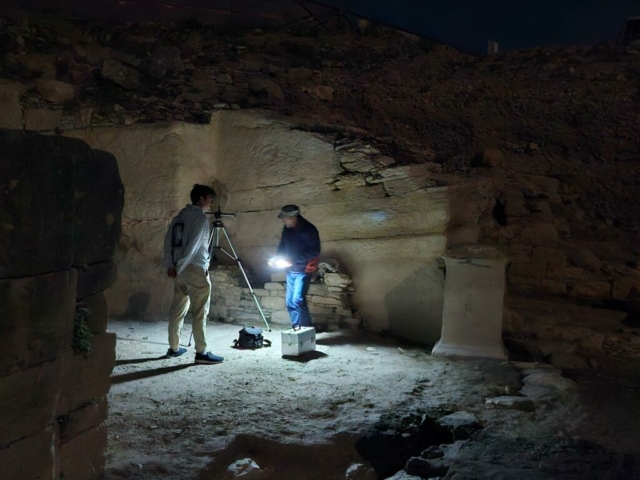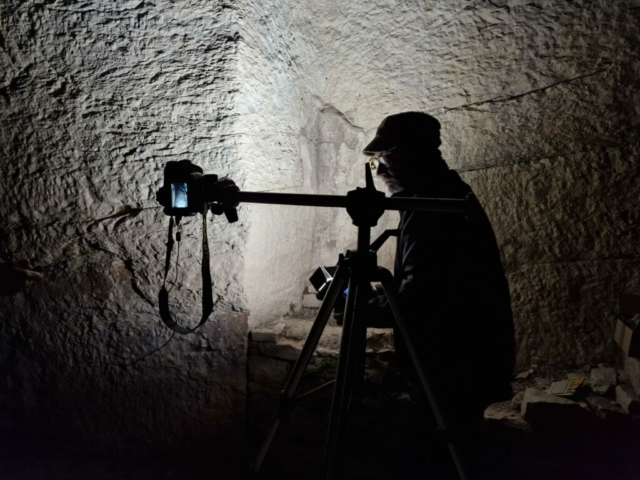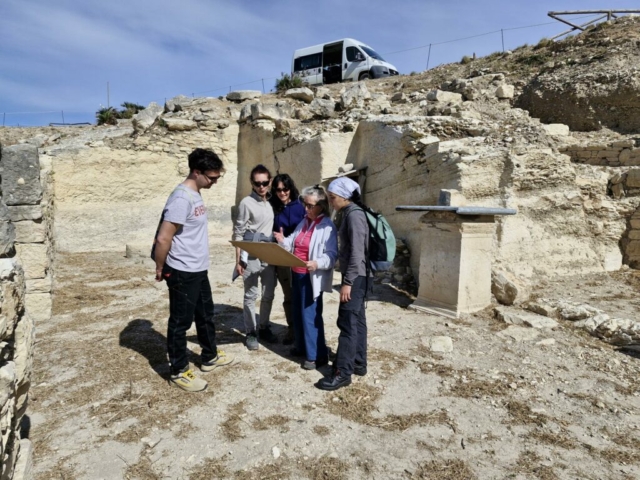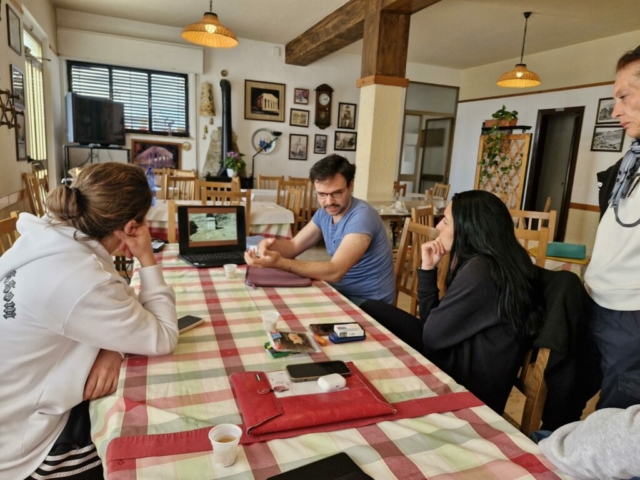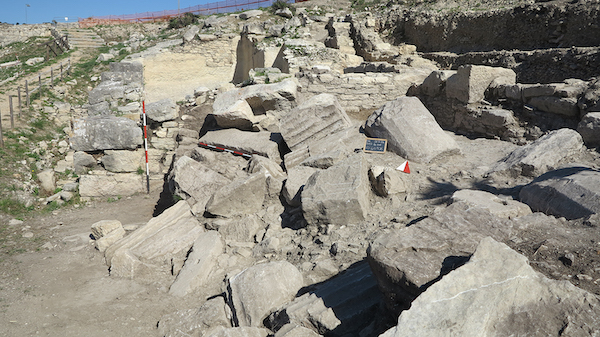
The archaeological research campaign in Segesta by the SAET Laboratory, directed by Anna Magnetto, has concluded. Luigi Biondo, Director of the Segesta Archaeological Park, and the Park staff supported the investigations with their usual great willingness.
Maria Cecilia Parra (UniPi and SNS) directed the researches, constantly in touch with Anna Magnetto. On the field, the young students Alice, Eva, Giulia (UniRoma3, UniPI, UniCG), Leon Battista Borsano (former SNS student and postgraduate, now SNS assignee), were coordinated by Chiara Michelini and Cesare Cassanelli (SNS), who also tutored for a proper documentation management and for the use of traditional and digital instrumentation, for graphic and photographic survey and its digital processing, for the classification/inventory of architectural and ceramic materials, and even for the night-time use of advanced photographic survey tools (RTI) to assist the reading in the epigraphic field.
This year’s work involved again the southern side of the agora and, in detail, the sector where the building whose name we know – ephebikon – was unearthed thanks to an important epigraphic record.
This is the term used in an inscription engraved on a statue base, found in its original position: the text reveals that the monument was erected in that setting by Diodoros in honor of his father Tittelos, who had held the office of gymnasiarch at Segesta.
The building had a portico above (stoa), which closed to the south the large paved square located in the center of the agora space, arranged along the southern slope with a lower paved elevation of about 6.65 meters. A real ‘system’ of water regimentation, brought to light behind the ephebikon, constitutes one of the most interesting discoveries of the 2024 excavation campaign: a large and complex work of hydraulic engineering, perfectly consistent with the monumentalization project of the late Hellenistic agora, which ensured the outflow and collection of rainwater from the upper monumental complex of the agora towards one or more points of preservation, which future investigations will allow to learn more about.
Of no less interest was the discovery, in an area likely open to the east at the ephebikon, of an imposing collapse of a monumental elevation, which required great effort not only for the excavation and removal of the mighty architectural elements, but also for the proper and progressive documentation, throught drone-assisted photogrammetry and subsequent modeling, of another portion of the buildings that closed the late Hellenistic agora of Segesta to the south.
The ephebikon, whose name clearly refers to the gymnasium activities of Ephebians from Segesta, now can be fully included into the context of research related to the Greek gymnasium, which will be the subject of a study meeting in the process of being organized at the Scuola Normale.


